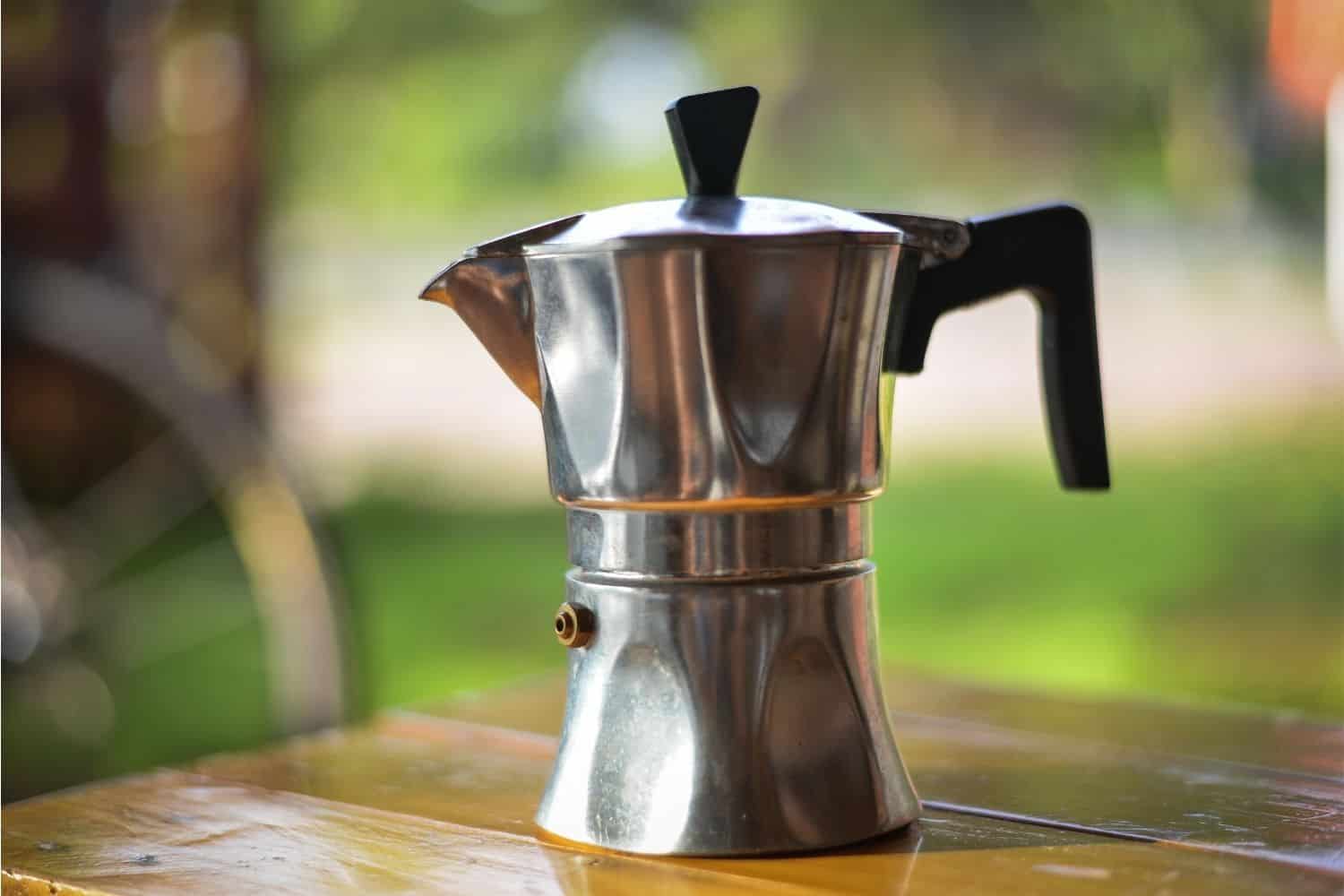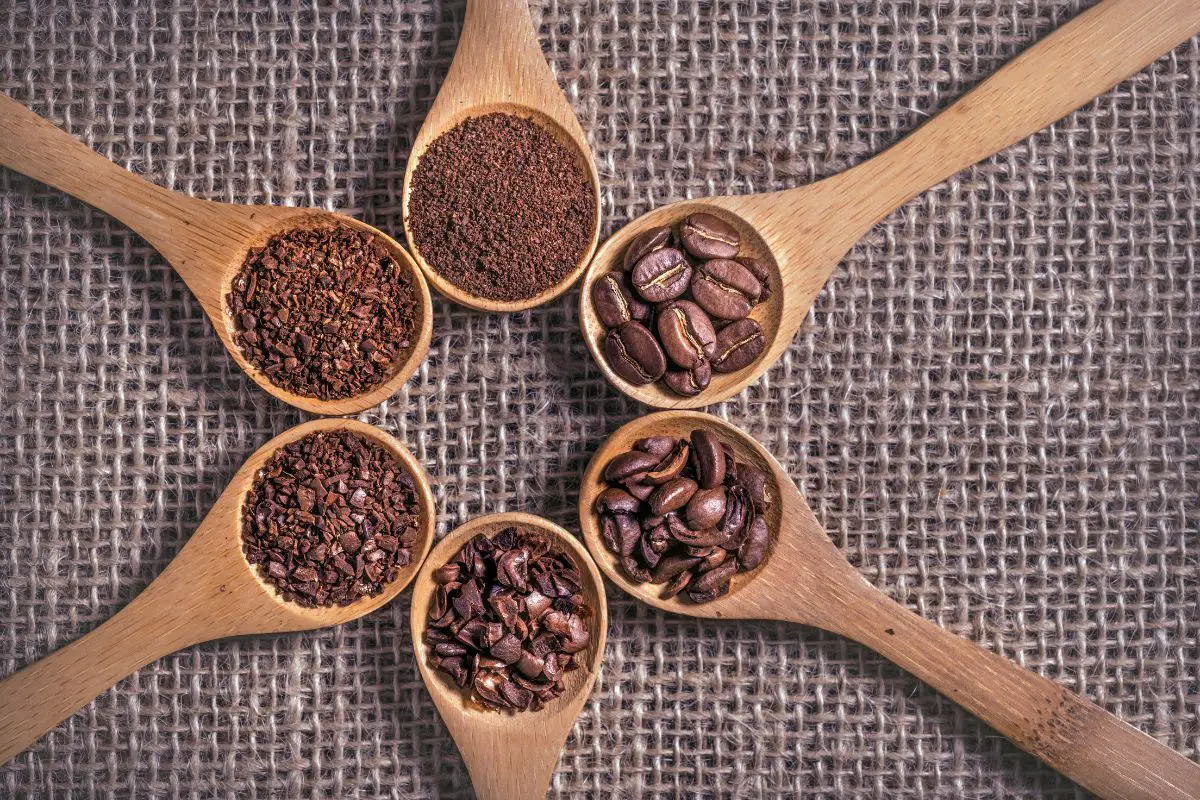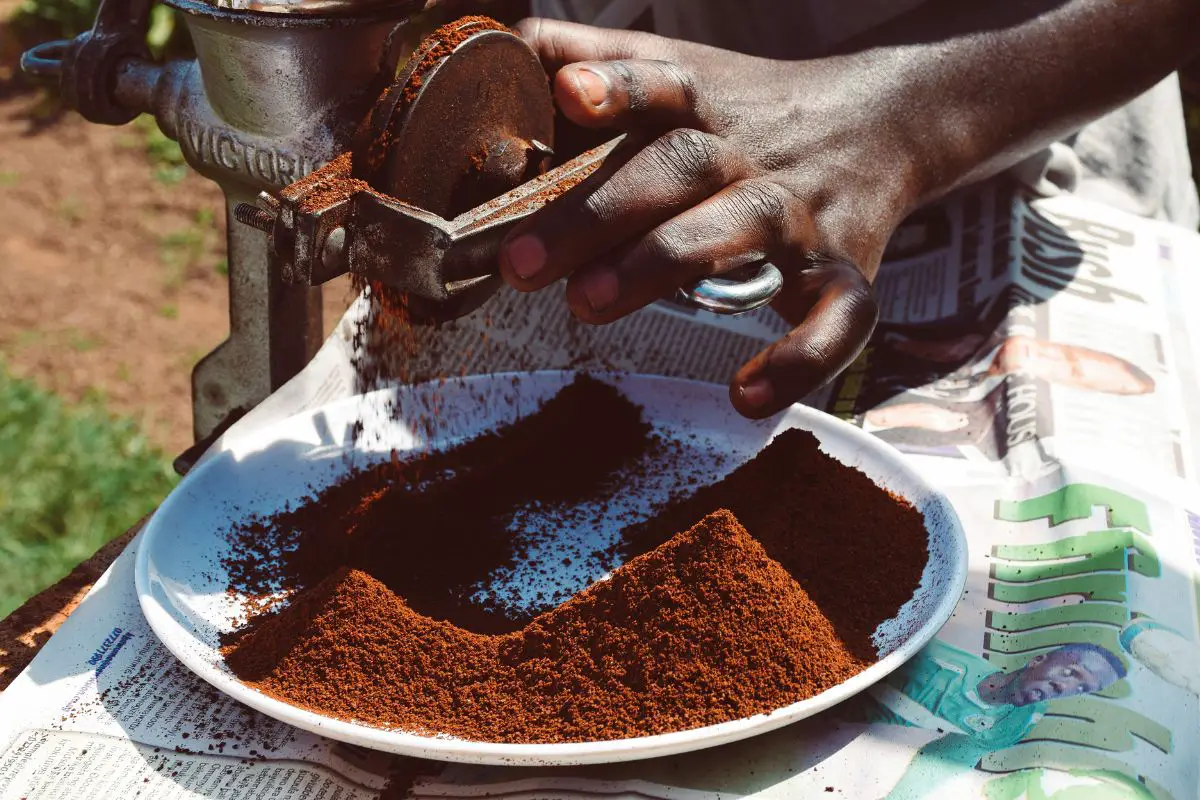In the realm of coffee brewing, the moka pot stands as a venerable device that produces a rich and robust cup of coffee. Like any brewing method, achieving the perfect cup requires attention to various factors, one of which is the grind size. The grind size, akin to the gears in a well-oiled machine, plays a crucial role in extracting the desired flavors from the coffee grounds. It is the key that unlocks the door to a harmonious infusion of taste, aroma, and texture.

Understanding the impact of grind size on moka pot brewing is imperative for coffee enthusiasts seeking a delightful and safe experience. This article will delve into the importance of grind size, explore the different types of grind sizes suitable for moka pot brewing, provide insights on adjusting the grind size for desired results, and offer tips and techniques to enhance the brewing process. Additionally, troubleshooting common grind size issues will be addressed to ensure a seamless brewing journey.
By unraveling the mysteries of grind size, coffee lovers can savor each cup with confidence, knowing that they have harnessed the power of this crucial element in their pursuit of coffee perfection.
Key Takeaways
- Grind size is crucial in achieving the perfect cup of coffee with a moka pot.
- Finer grind sizes result in faster extraction and stronger, more intense coffee.
- Coarser grind sizes lead to slower extraction and milder, less intense coffee.
- Experimenting with different grind sizes is important to find the ideal taste profile for individual preferences.
The Importance of Grind Size in Coffee Brewing
The significance of grind size in coffee brewing lies in its ability to directly impact the extraction process, as a finely ground coffee allows for a greater surface area and faster extraction, while a coarser grind promotes a slower extraction and a different flavor profile.
When coffee is brewed, hot water comes into contact with the ground coffee, extracting soluble compounds such as oils, sugars, acids, and caffeine. The size of the coffee particles affects the rate and efficiency of this extraction process.
A finer grind size creates more surface area, allowing water to extract flavor compounds more quickly. This results in a shorter brewing time and a stronger, more intense cup of coffee. However, if the grind size is too fine, it can lead to over-extraction and a bitter taste.
On the other hand, a coarser grind size slows down the extraction process, resulting in a milder and less intense cup of coffee. It also allows for a more controlled extraction, as the water takes longer to penetrate the coffee particles.
In moka pot brewing, different grind sizes can be used to achieve different flavor profiles. The choice of grind size depends on personal preference and the desired strength of the coffee. Finer grinds are generally recommended for moka pots, as they ensure a more efficient extraction process. However, it is essential to find the right balance to avoid bitterness or under-extraction.
Types of Grind Sizes for Moka Pot Brewing

Different grind sizes are employed in the preparation of coffee using a moka pot to achieve various levels of extraction, ensuring the ideal balance of flavors and aromas. The grind size for moka pot brewing is generally finer than that used for drip or French press coffee. This is because a finer grind allows for increased surface area, leading to a faster extraction process. However, it is important to note that the grind size should not be too fine, as it can result in over-extraction and a bitter taste.
There are three main types of grind sizes for moka pot brewing: fine, medium, and coarse. The fine grind size is similar to that of table salt, and it is commonly used for darker roasts. This grind size allows for a slower extraction, resulting in a more intense and robust flavor profile.
The medium grind size, resembling sand, is suitable for medium to dark roasts. It strikes a balance between extraction speed and flavor intensity.
Lastly, the coarse grind size, resembling rough sand, is used for lighter roasts. This grind size allows for a faster extraction, resulting in a brighter and more delicate flavor profile.
Adjusting the grind size for desired results is crucial in moka pot brewing. By experimenting with different grind sizes, one can fine-tune the extraction process to achieve the desired flavors and aromas in their coffee. This will be further discussed in the subsequent section about adjusting grind size for desired results.
Adjusting Grind Size for Desired Results
One effective way to achieve desired results in coffee brewing is by carefully adjusting the fineness or coarseness of the coffee particles. The grind size plays a crucial role in the extraction process, influencing the flavor, strength, and consistency of the brewed coffee. When using a Moka pot, it is important to find the right grind size to optimize the brewing process and ensure a safe and enjoyable coffee experience.
To help understand the relationship between grind size and brewing results, the following table provides a visual representation:
| Grind Size | Brewing Result |
|---|---|
| Fine | Strong, intense flavor but may result in over-extraction and bitterness. |
| Medium | Balanced flavor with good extraction, suitable for most Moka pot brewing. |
| Coarse | Weaker flavor, under-extraction, and a potentially watery coffee. |
By adjusting the grind size, coffee enthusiasts can fine-tune their brewing technique to achieve the desired taste and strength. It is important to note that the optimal grind size may vary depending on personal preferences, the type of Moka pot, and the coffee beans used. Experimentation and taste testing will help determine the ideal grind size for individual preferences.
Transitioning into the subsequent section about ‘grind size tips and techniques,’ it is important to consider some key factors that can further enhance the Moka pot brewing process.
Grind Size Tips and Techniques

Enhancing the extraction process in coffee brewing can be achieved by honing in on the ideal level of fineness or coarseness of the coffee particles, allowing for a harmonious dance between the coffee and water. The grind size plays a crucial role in determining the rate of extraction and the flavors extracted from the coffee grounds.
When it comes to moka pot brewing, there are a few tips and techniques that can help achieve the desired results.
Firstly, it is recommended to use a medium-fine grind for moka pot brewing. This grind size allows for a balanced extraction, ensuring that the coffee is not under-extracted or over-extracted. A medium-fine grind also helps to prevent clogging the metal filter in the moka pot.
Additionally, it is important to ensure that the coffee grounds are evenly distributed in the filter basket. This can be achieved by gently tapping the filter basket to level the grounds and removing any excess coffee particles.
Furthermore, adjusting the grind size can help fine-tune the brewing process. If the coffee tastes weak or lacks flavor, a finer grind can be used to increase the extraction. Conversely, if the coffee tastes bitter or overly strong, a coarser grind can be used to reduce the extraction.
By following these grind size tips and techniques, coffee enthusiasts can achieve a better extraction in their moka pot brewing.
Transitioning into the subsequent section about troubleshooting grind size issues, it is important to understand the common problems that may arise and how to address them.
Troubleshooting Grind Size Issues
This discussion focuses on troubleshooting grind size issues when brewing coffee.
One common issue is over-extracted or bitter coffee, which occurs when the grind size is too fine and the coffee is brewed for too long.
On the other hand, under-extracted or weak coffee can result from a grind size that is too coarse or a brewing time that is too short.
To fix brewing problems, adjusting the grind size is often necessary, as it directly affects the extraction process and the flavor profile of the coffee.
Over-Extracted or Bitter Coffee
Over-extracted or bitter coffee can often result from using a grind size that is too fine for a moka pot. When the coffee is ground too finely, it increases the surface area and allows for excessive extraction of compounds, leading to a bitter taste.
To avoid this issue, it is crucial to use the correct grind size for a moka pot. Here are some key points to consider:
- The coffee particles should be similar in size, resembling granulated sugar.
- Avoid using espresso grind, which is too fine for a moka pot.
- A coarser grind will result in a faster extraction and a weaker flavor.
- Ensure that the water temperature is not too high, as it can contribute to over-extraction.
- Clean your moka pot thoroughly after each use to prevent residue buildup.
Understanding the importance of grind size and its impact on the final taste of your coffee will help you achieve a better brewing experience.
Transitioning into the subsequent section on ‘under-extracted or weak coffee,’ it is important to note that using a grind size that is too coarse can result in this issue.
Under-Extracted or Weak Coffee
Insufficient extraction or weak coffee can arise when the coffee grounds are too coarse, leading to a lack of solubles being dissolved in the water, resulting in a less flavorful brew.
In a moka pot, the grind size plays a crucial role in determining the extraction rate. If the grind size is too coarse, the water will flow through the grounds too quickly, resulting in under-extraction. This means that the water has not had enough time to extract the desired flavors and aromas from the coffee grounds. As a result, the coffee may taste weak, lacking in body and complexity.
To address this issue, adjusting the grind size to a finer setting can help increase the extraction rate and produce a more balanced and flavorful cup of coffee.
Transitioning into the subsequent section, adjusting the grind size is a key step in fixing brewing problems and achieving the desired taste.
Adjusting Grind Size to Fix Brewing Problems
Adjusting the particle fineness in the brewing process can effectively address issues and improve the overall taste profile of the coffee.
When faced with under-extracted or weak coffee from a moka pot, the grind size can be adjusted to rectify the problem. A finer grind size can be employed to increase extraction and improve the strength of the brew. By reducing the particle size, the surface area of the coffee grounds increases, allowing for more efficient extraction of flavors and aromas. However, it is essential to note that adjusting the grind size too fine may lead to over-extraction and a bitter taste. Therefore, it is crucial to find the optimal grind size that balances extraction and flavor.
By experimenting with different grind sizes and carefully monitoring the brewing process, one can achieve the desired taste profile.
Transitioning into the subsequent section, understanding the impact of grind size on moka pot brewing can help in making informed decisions for a better coffee experience.
Final Thoughts on Grind Size and Moka Pot Brewing
In conclusion, the grind size plays a crucial role in achieving the perfect balance of flavors and avoiding any undesirable bitterness or weak taste in moka pot brewing, akin to the delicate dance of a tightrope walker maintaining their equilibrium. The grind size directly affects the extraction process, influencing the rate at which water flows through the coffee grounds and the surface area available for extraction.
To achieve optimal results, it is recommended to use a medium-fine grind for moka pot brewing. This grind size allows for a balanced extraction, where the water passes through the grounds at a controlled rate, extracting the desirable flavors without over-extraction.
Using a finer grind may lead to over-extraction, resulting in a bitter and over-extracted brew. Conversely, using a coarser grind can result in under-extraction, leading to a weak and watery taste.
It is important to note that the ideal grind size can vary depending on personal preference and the specific moka pot being used. Experimentation is key to finding the perfect grind size that suits individual tastes.
Overall, understanding the impact of grind size on moka pot brewing is essential for achieving a safe and enjoyable coffee experience. By adjusting the grind size, coffee enthusiasts can fine-tune their brewing process and ensure a well-balanced, flavorful cup of coffee every time.
Frequently Asked Questions
Can I use pre-ground coffee for brewing in a moka pot?
Yes, pre-ground coffee can be used for brewing in a moka pot. However, it is recommended to use freshly ground coffee for optimal flavor and aroma. Pre-ground coffee may result in a slightly less flavorful and aromatic brew.
How does the grind size affect the taste of the coffee brewed in a moka pot?
The grind size significantly influences the taste of coffee brewed in a moka pot. Finer grinds result in a stronger, more intense flavor, while coarser grinds produce a weaker and less flavorful brew.
Is it possible to achieve a fine grind size without using an expensive coffee grinder?
Achieving a fine grind size without an expensive coffee grinder is possible by using alternative methods such as a manual burr grinder or a mortar and pestle. These options provide control over grind size and can result in a desirable extraction for a moka pot.
Can I use a coarser grind size for a stronger cup of coffee in a moka pot?
Using a coarser grind size in a moka pot may result in a weaker cup of coffee. The smaller particles in a finer grind extract more flavor, producing a stronger brew. Experiment with different grind sizes to find the desired strength.
How can I determine the ideal grind size for my specific moka pot?
Determining the ideal grind size for a specific moka pot involves experimentation. Start with a medium grind size and then adjust based on taste. Finer grinds yield stronger coffee, while coarser grinds result in a weaker brew.
Conclusion
In conclusion, the appropriate grind size is crucial for successful brewing with a Moka pot. The type of grind size used will greatly influence the overall taste and quality of the coffee produced.
By adjusting the grind size, one can achieve the desired results, whether it be a stronger or milder brew. It is important to keep in mind the various tips and techniques provided to ensure a consistent and delicious cup of coffee.
By mastering the art of grind size, you can unlock the full potential of your Moka pot brewing experience.
Related Articles: